|
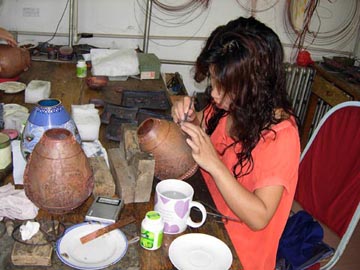 |
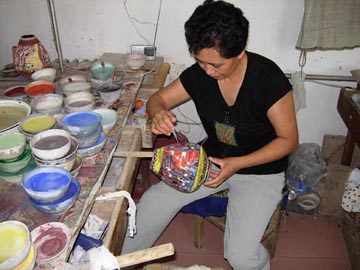 |
Filigree
Soldering |
Enamel
Filling |
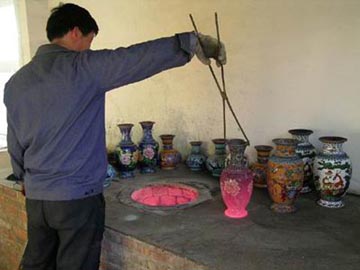 |
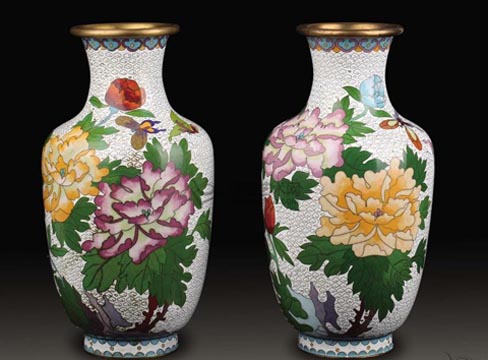 |
Enamel
Firing |
Cloisonne
Vase |
It is very complicated to make cloisonné. The finished products take several steps as follows:
The first step is body making. The material used for making the body is copper, because copper is easily hammered and stretched. This step requires a sound judgment in shaping and uniformity of the thickness and weight. It is in fact the work of the copper smith. For the cloisonné craftsman when an article is well shaped, his work is just on the start.
The second step is filigree soldering. This step requires great and high creativeness. The craftsman adheres with copper strips onto the body. These strips are of 1/16 inch in diameter and of different lengths as the artisan needs. The strips of filigree thus adhered make a complicated but complete pattern. The artisan has a blueprint in mind and he can make full use of his experience, imagination and aesthetic view in setting the copper strips on the copper body.
The third step is to apply the color, known as “enamel filling”. The color or enamel is like the glaze on the ceramics. It is called “Falang”. Its basic elements are boric acid, saltpeter and alkaline. Due to the difference of the minerals added, the colors differ accordingly. Usually one with much iron will turn gray, with uranium yellow, with chromium green, with zinc white, with bronze blue, with gold or iodine red. In time of filling, all the colors ground beforehand into minute powder and contained in plates, placed in front of the workers. Then they will be applied to the little compartments separated by filigree.
The fourth step is enamel firing. That is to put the articles with its enamel fillings to kiln of 900 degrees centigrade. After a short moment the copper body will turn red and the enamel in little compartments will sink down a little bit. That will require a refilling. This process will repeat until the little compartments are finally fully filled.
The fifth step is polishing. The first polish is with emery. Its aim is to make the filigree and the filled compartments even. The whole piece is again put to fire. Then polish once more with whetstone, finally using a piece of hard carbon to polish again so as to obtain some luster on the surface of the article.
The sixth step is gilding. To place the article in fluid of gold or silver and to add electric current the exposed parts of the filigree and the metal fringes of the article will be smoothly and evenly gilded. After that the metal part of the article will not get rusty. Then the article will undergo another electroplating and a slight polish.
Beijing is the best place to purchase cloisonné because it is the local handicraft. I can bring you to Beijing Enamel Factory where you can visit their workshop and do shopping. Here are some cloisonne handicrafts on sale if you have interest please contact me.
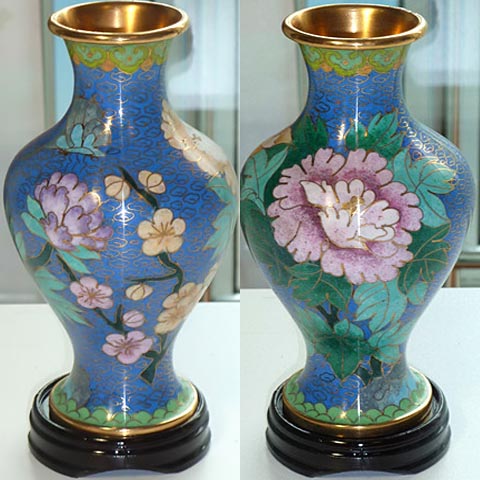 |
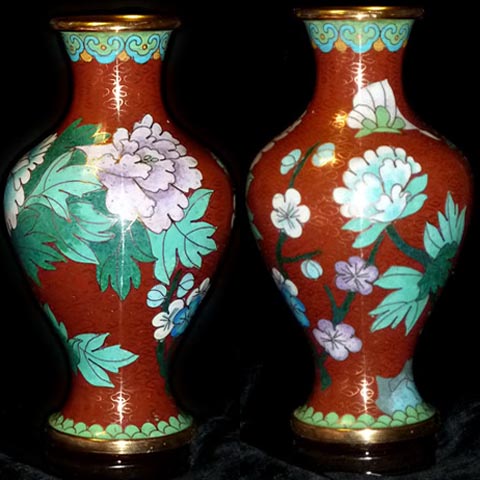 |
| Cloisonne Vase 1, 15.2cm high, vase mouth wide 4.3cm, 120USD including shipping | Cloisonne Vase 2, 15.2cm high, vase mouth wide 4.3cm, 120USD including shipping |
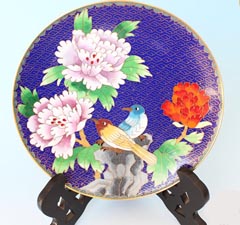 |
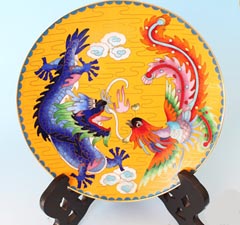 |
 |
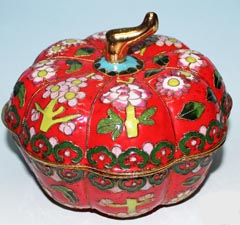 |
Cloisonne
Plate 1 |
Cloisonne
Plate 2 |
Cloisonne
Plate 3 |
Cloisonne
Pumpkin |
Mobile:(+86-1350 110 3837) Wechat:(13501103837) E-mail: chinasilkrug@msn.com